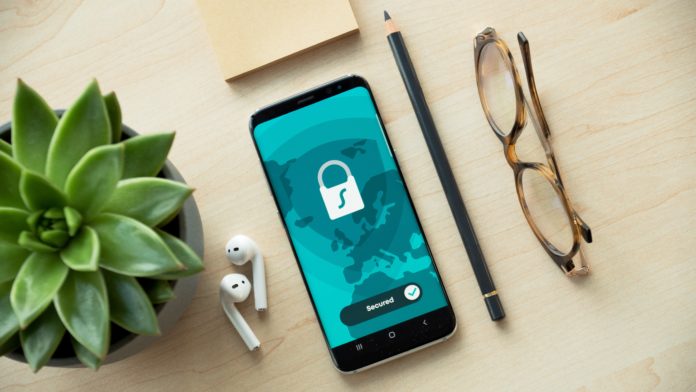Enterprise mobile apps address the growing need for employees to access enterprise data from their personal devices. This is especially true since the start of the COVID-19 pandemic, which saw many employees working from home rather than in the office. While providing enterprises and their employees ultimate flexibility and boosted productivity, enterprise mobile apps are also susceptible to security threats and data breaches.
A recent IDG study revealed the impact of the pandemic on enterprises advancing their digital business transformation efforts, noting that for nearly half of respondents, enhancing security controls around these initiatives will include securing enterprise mobile apps.
While software-as-a-service (SaaS) vendors build baseline security into their platforms, there are steps that organizations should take as well to secure mobile enterprise apps as part of their mobile device management (MDM) strategy.
Below are some actionable best practices to secure your mobile enterprise apps.
Steps to Securing Your Enterprise Mobile Apps
1. Identify and find sensitive information
Identify sensitive data in your cloud. Depending on your industry, the type of data to classify for extra protection will vary. For instance, financial data or health records will need to be protected on your enterprise mobile apps. However, identifying sensitive data and knowing where it is stored in the cloud might not always be straightforward. In fact, 65% of respondents to the 2021 Global Encryption Trends Study expressed having difficulty finding where sensitive data is stored in their cloud.
To identify and find sensitive data that resides in your cloud and remains accessible to your enterprise mobile apps, your company should set policies surrounding data security. A good place to start is to classify sensitive data more broadly according to your industry standards and regulations, but also to your individual company. There may even be multiple layers of classification, including “confidential,” “internal, and “public.”
Next, take advantage of automation and intelligence tools to start systematically auditing and categorizing data to gain greater visibility into your IT infrastructure.
Finally, don’t neglect the human element in data security. Cultivate a culture of data security by educating users in your company about what is considered sensitive information in your organization, how to responsibly handle it, as well as how to detect and avoid phishing and other scam tactics.
2. Layer your protection
Employee mistakes are a driving factor in data breaches, such as losing a device, leaving it unattended, or mistakenly downloading an app that contains malware. It is therefore a good idea to take action on the following:
- require two-factor or multi-factor authentication
- implement biometric scans, such as facial recognition or fingerprint scan
- enforce high standards of password complexity
- vet apps and manage their restrictions/access to your employees’ devices
- enable centralized remote lock and wipe
- set (shorter) session timeouts
3. Encrypt data
Currently, only 50% of companies have an encryption strategy in place to protect their cloud data. Encrypt data transmitted among devices, apps, and cloud servers through Advanced Encryption Standard (AES), Triple Data Encryption Standard (DES), VPN tunnels, or over HTTPS. Using the more common methods of AES and Triple DES will also require effective key management. Hardware security models, which are devices designed for tamper-resistant cryptographic processes and their key management, are becoming increasingly popular to encrypt apps and data containers. Regardless of which encryption method(s) your company implements, layer it with firewalls, a network monitoring tool, and/or endpoint protection software.
Also read: Data Loss Prevention Strategies
4. Provide company-use-only devices
An enterprise can embrace a BYOD, corporate-owned and personally enabled (COPE), or hybrid model of device use. While BYOD allows users to connect with a device of their choosing, COPE is a model whereby enterprises provide employees with corporate-approved devices.
The upfront and maintenance costs of providing each employee with a laptop, desktop computer, tablet and/or smartphone is worth considering, so that employees’ private apps and data storage do not interfere with your enterprise mobile apps.
The benefit of giving your employees the devices they need for their work is that your company has control over device security, geolocation tracking, and settings configuration without encroaching on employees’ privacy.
Also read: Top Network Access Control (NAC) Solutions for 2021
5. Segment your cloud
If your company takes the BYOD approach to device use, it’s possible to mitigate security breaches in your enterprise mobile apps by containerizing employee’s personal data from corporate data on their personal devices. More generally, regardless of device use model, your company should adopt the Zero Trust approach to technology use and access by enforcing access security controls to different parts of the cloud through apps.
Securing Your Mobile Enterprise Apps
Today’s digital business transformation, in which users often bring their own mobile devices to enterprise networks, affords businesses greater flexibility and productivity and empowers end users to choose the device they want to work with. Yet, with these benefits comes greater risk for security breaches. The nature of this transformation necessitates attention to mobile device management as part of a company’s more comprehensive enterprise mobility management.
Read next: What is Cloud Security Posture Management?



